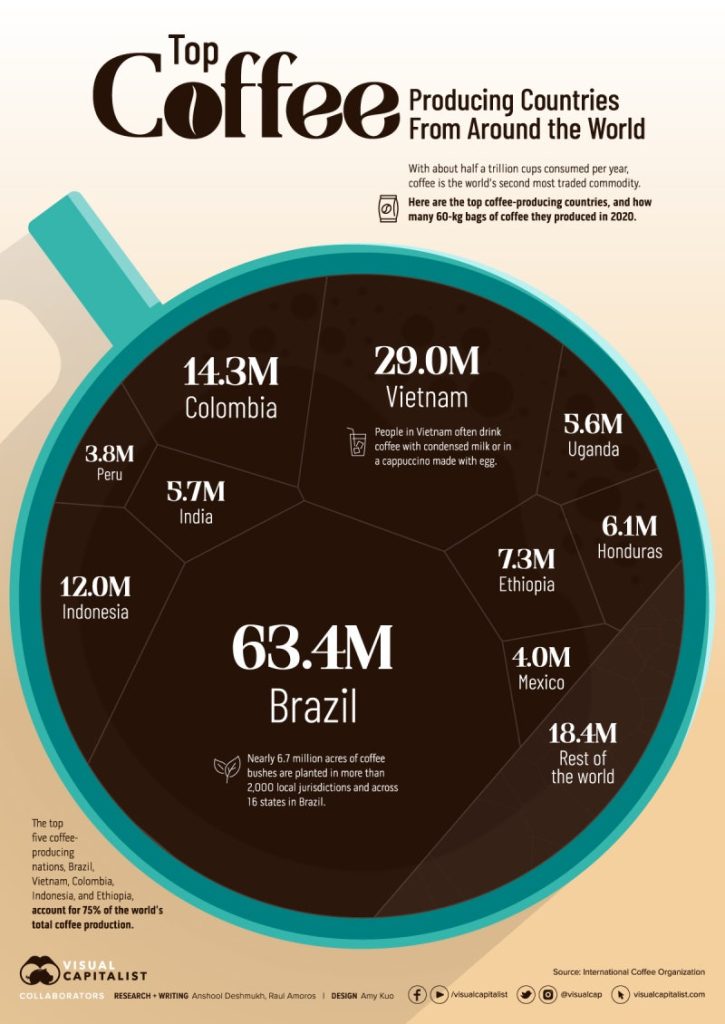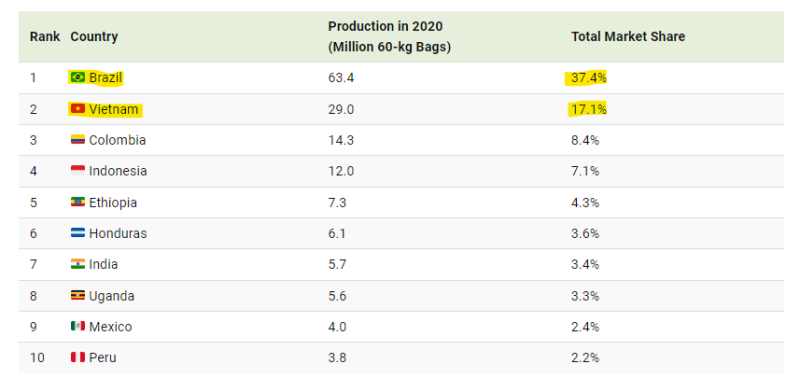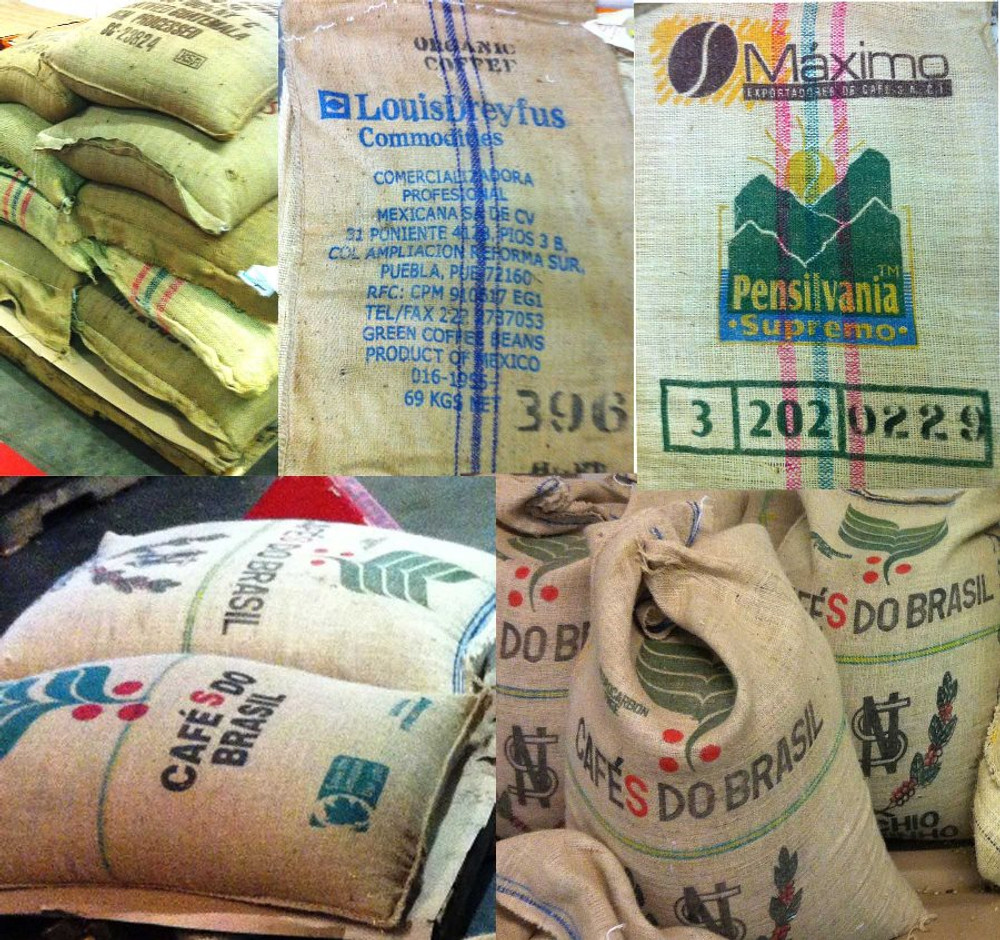coffee South Koreans drink about 367 cups of coffee per person per year, making them the second largest coffee consumers in the world.
however, coffee requires specific climatic conditions to actually grow.
coffee can only be grown in the so-called “Coffee Belt,” a region of tropical and subtropical climates between the Tropic of Cancer and the Tropic of Cancer.
now, let’s take a look at the world’s major coffee producing countries and the future of the coffee industry.
top 5 coffee producing countries inthe world
1. brazil
brazil isthe absolute powerhouse of coffee production in the world.
it accounts for about 40% of the world’s coffee supply and has vast coffee plantations in the Minas Gerais, São Paulo, and Paraná regions.
notably, Brazil maintains a unique production method of drying coffee cherries in a natural, unwashed way, and the standard unit of measure in the coffee trade (the 60-kilogram sack) also originated in Brazil.
2. vietnam
vietnamis responsible for more than 40% of the world’s robusta coffee production.
vietnamese coffee is highly productive and consistently sought after in global markets for its intense flavor.
3. colombia
colombia isa producer of fine Arabica coffee, characterized by its smooth taste and rich aroma.
a marketing strategy featuring the character “Juan Valdez” has helped raise the global profile of Colombian coffee.
4. indonesia
indonesia isknown for its rare coffee, Kopi Luwak.
this coffee, which is naturally fermented by civet cats, is highly prized and has a unique flavor.
5. ethiopia
ethiopiais known as the birthplace of coffee.
it produces mostly Arabica coffee, which is prized by gourmands for its rich body and complex flavor.
the coffee belt: a special place where coffee grows
coffee requires an average annual temperature of 1520 degrees Fahrenheit, 6075% humidity, more than 2,200 hours of sunshine per year, and 1,400 to 2,500 millimeters of annual precipitation to thrive.
the regions that have these conditions are known as “coffee belts”.
south Korea is not currently suitable for growing coffee due to its harsh winters and low precipitation, but this may change in the future if warming continues.
the future ofcoffee production: the age of hybrid coffee
climate change is threatening the survival of traditional coffee-growing regions.
this has led to the development ofnew varieties of coffee (hybrid coffee)that can withstand higher temperatures .
in recent years, wild coffee varieties have been discovered growing in places like the coast of Côte d’Ivoire and Sierra Leone, and are being touted as an alternative for the future of the coffee industry.
closing thoughts
currently, the center of coffee production is dominated by the top five countries – Brazil, Vietnam, Colombia, Indonesia, and Ethiopia.
in the future, the coffee industry will be further evolved by blending techniques, new varietal developments, and sustainable growing practices.
we look forward to enjoying a hot cup of Americano tomorrow morning, and we look forward to the future of coffee.








📝 리뷰 작성하기